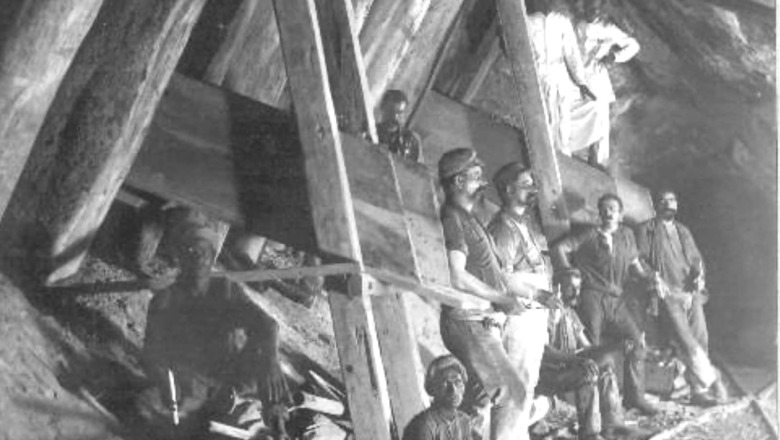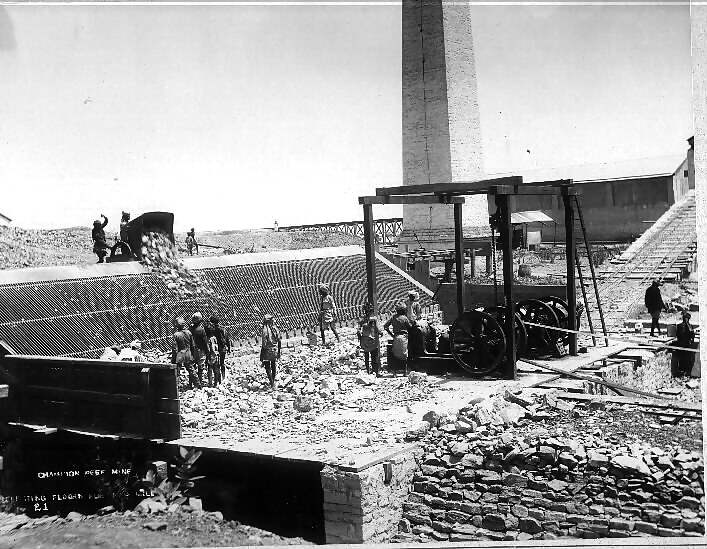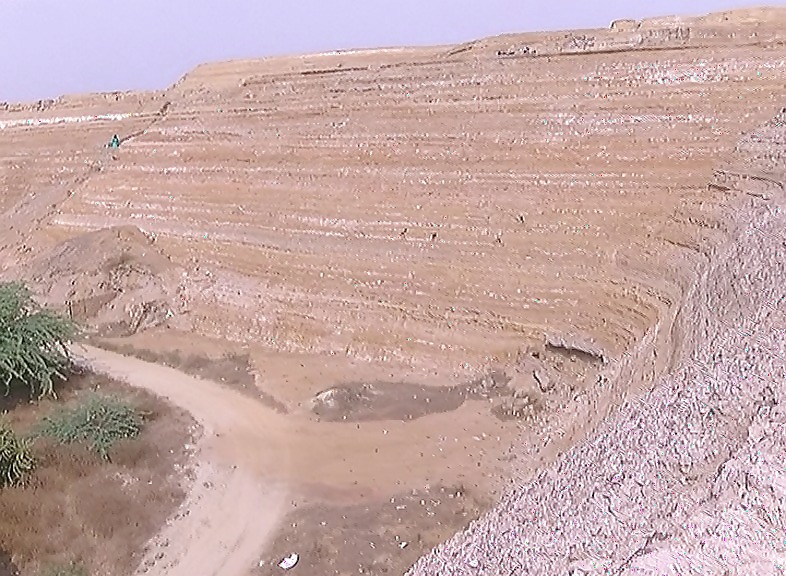
views
When one thinks of gold mines, we quickly conjure up images of deep dark labyrinths, sounds of constant drilling, miners bustling around with safety vests and flashlights attached to their heads with pieces of “black gold” in their hands. Well! That typically would have been the scene at the Kolar Gold Fields, India’s oldest and richest gold mine, lying defunct today after being exploited for over 120 years by the British.
As the hysteria builds up for the movie KGF Chapter2, the real story of this once “City of Gold” will tug at your heartstrings.
“I have seen the glitter of gold!” said 82-year-old Muruganathan K excitedly as he flashed a toothy smile. But one could see the smile vanish from the fragile looking face of this former miner — just like the gold deposits from the KGF.
“I remember the days when we would sit outside our homes and use a sieve to separate small pellets of gold from a mixture of mud and cyanide. It’s true, we would find some, but now it’s all gone along with our hopes and families,” said the former employee of Bharat Gold Mines Limited (BGML), the company involved in gold mining at KGF.
“There is a big difference between fact and fiction. It is a fact that KGF today has lost its sheen, it is also a fact that the movie KGF is fiction,” Muruganathan added.
The British began gold mining operations in KGF in the late 1800s, but it was brought to a grinding halt in 2001 after the state government found it unviable to run operations at the current yield.
Treasure Trove of Opportunities
After the mine’s closure, thousands of families employed at the KGF mines were rendered jobless forcing them to seek employment 100 km away in the city of Bengaluru. Even today, a special train service from Bengaluru to Marikuppam in KGF transports nearly 30,000 people each day between the two cities.
People who have worked at KGF carry a great sense of pride, recall the ‘golden days’ and hope that the future may bring back their lost sheen.
According to the Ministry of Mines data, India’s current gold reserves total 70.1 tonnes, and Karnataka accounts for close to 88% of these gold reserves, Andhra Pradesh around 12% and an insignificant amount in Jharkhand. The British government found gold reserves in the 80-km Kolar Schist Belt extending from Kuppam to Srinivasapura.
“It had become difficult to excavate and the cost of excavation was higher than the value of gold mined. The gold deposits were almost a 1.5-km deep. The heavy losses caused BGML to shut, rendering thousands jobless,” explained Das Chinnasavari, the convenor of the KGF Citizens Protection Forum.
Gold deposits in Karnataka’s Kolar was said to have been first discovered by the Cholas of South India, it was the British who increased the yield with their modern machinery.
By 1850, KGF was one of the deepest mines in the world and at its peak, and was considered to be the largest producer of gold in the country.

KGF mines have been drilled to a depth of 3.24 km with close to 1,400 km access tunnels, reports say. Organised mining began in 1880 by John Taylor and Sons and the British government struck gold in the 80-km Kolar Schist Belt that extends from Kuppam to Srinivasapura.
K Anbazhagan, a former trade Union leader of BGML, explained how reports available with the Geological Survey of India and old British records show that to date only around 8 km of gold reserves was mined.
“There are more than 72 km of gold reserves that are yet to be tapped. KGF has produced around 800 tonne of gold in over 120 years. That is the number that has been accounted for. But more than 3,000 tonnes of unaccounted gold has been taken away,” he said.
Digging the Past
The mines at KGF may look dull, dilapidated and rusty, but this little town was once the pride of the British empire — a deep treasure trove that gave them bulk of gold to carry back to England.
“You should see some of the very old pictures where British officers and even viceroys have been photographed holding gold bars in their hands. KGF was truly a jewel in the crown. Sadly, they (British) looted our motherland and took away our treasure. We were helpless,” said Peter Rafael who prides in calling himself “Golden Peter”, after his family’s occupation of working in the mines.
For the British, the KGF mines were the ‘hen that lays the golden egg’, but for the locals it was a source of employment.
Recalling stories told to them by their parents and grandparents, local residents talk of how the place was well developed with top-class schools, clubs and recreational facilities such as a Boat Club and a Golf course.
While the club was restricted to European nationals, the BGML hospital was the first hospital to be electrified and have its own X-ray unit. Established in 1880 by the O’Donnell brothers, the medical facility was free for all miners and their families.
Interestingly, the KGF was the first city to be electrified in Asia, even before Bengaluru, with power generation at the Shivanasamudra hydro-electric station.
Some of the important places in KGF were given British names or named after British officers. For example, the main mining areas where KGF was located were called Champion Reef, Oorgaum, Nundydoorg, Balaghat, Coromandel, Mysore Gold, Tank Block and Nine Reefs Mines.
“Places were named after British officers like Bowringpet (modern day Bangarpet), Andersonpet and my birthplace Robertsonpet. Bangara in Kannada means gold. Today, KGF is once again popular because of the movie. But let’s not forget the famous Bangarpet chaats,” joked Sathyamurthy, who shifted to Bengaluru due to his teaching job in 1998.
Sathyamurthy explains how his family originally came from Tamil Nadu as many of the local people were in fear and so refused to work in the mines. Several families from Andhra Pradesh also arrived here a little over a century ago. As many of the British officers, workers and their families settled in KGF, the quaint little town soon came to be known as “mini England”.
“There were parties, balls and cricket matches. KGF will always be a part of British-India history. Several families are Anglo-Indians here and many of our seniors have chapters and chapters of stories to tell,” he said.
‘Unhealthy’ KGF
Unlike the reel life shown in KGF-Chapter 2 movie, those who live in the field have several real-life problems. After the mines were closed, the effluents were dumped creating huge mounds of cyanide and silica, known locally as ‘Cyanide mountains.’ There are 13 such mounds, which rise to a height of 40 metres causing major health hazards in the region.
Not only have these effluents contaminated the water table in a place that already faces severe drinking water problems, many suffer from respiratory-related diseases such as asthma, wheezing, silicosis and tuberculosis due to the fine dust from these dumps.

Silver Lining
After decades of despair, the KGF is seeing some glimmer of hope. In 2021, the Union government gave the green signal for a mega industrial park to come up in 3,500 acres in KGF. This will improve the prospects of Kolar district, of which KGF is a part.
Karnataka’s industries minister Murugesh Nirani told News 18 that the survey for the proposed industrial township has been done.
“KGF is on the Chennai-Bengaluru industrial corridor and that it will be very beneficial for large industries who would like to set up a shop there,” he said.
“The cabinet has already cleared it. We are yet to see work on the ground. We have waited for years, hopefully KGF will prosper with this move by the state government,” G Jayakumar, coordinator of the Bharat Gold Mines Limited Employees, Supervisors and Officers United Forum, another organisation representing the people affected by the KGF closure, told News18.
“I work as a security guard for a gated property in the Electronic City. I travel by train every day from KGF. I have to wake up at 3 am to go to work and get back by 9 pm. I spent close to Rs 200 a day travelling. With my meagre salary, I take care of my mother and sister. If the government delivers on its promise of creating an industrial park here, youngsters like us will benefit tremendously,” said Patrick Abel, whose grandfather worked in the mines during the British era.
Read all the Latest News India and Breaking News here




















Comments
0 comment